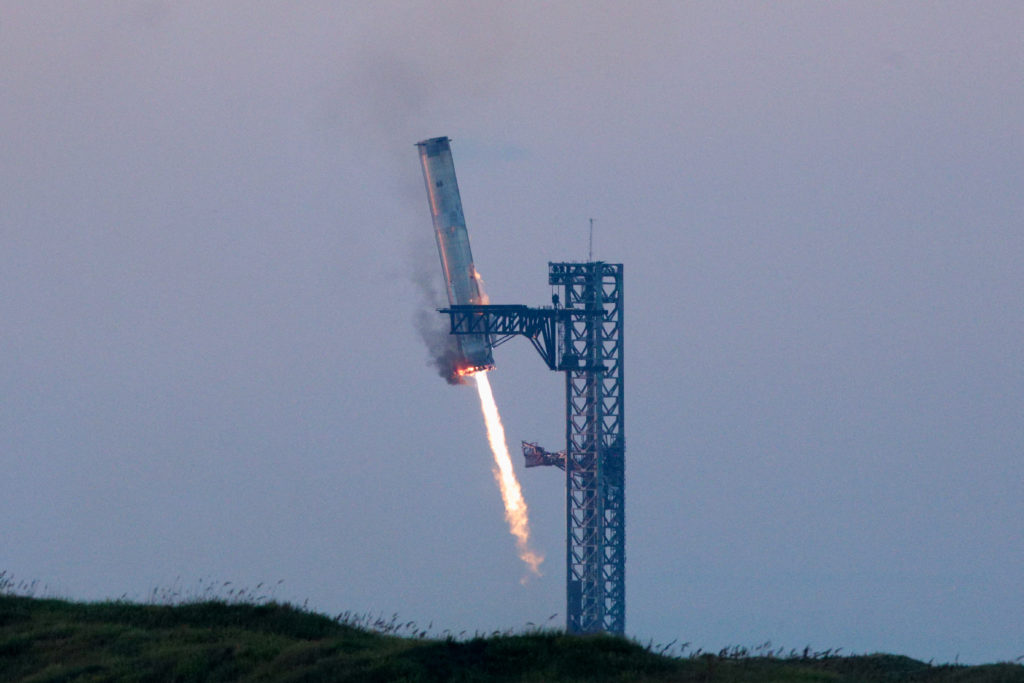
SpaceX has achieved a significant milestone in its mission to make space travel more sustainable with its latest Starship test flight.
On Sunday morning, SpaceX successfully launched the Super Heavy booster from its private launchpad in Boca Chica, Texas, and for the first time, managed to catch the massive rocket using mechanical arms attached to the launch tower. This was a crucial demonstration of SpaceX’s goal to make both the Super Heavy booster and the Starship rocket system fully reusable.
The launch took place at approximately 8:25 a.m. ET. After liftoff, the Super Heavy booster, powered by 33 engines, returned to Earth just a few minutes later. Unlike SpaceX’s Falcon 9 rocket, which typically lands on drone ships in the ocean, the Super Heavy booster was recaptured on land. It had to navigate back to the launch site and fit precisely between the outstretched mechanical arms of the launch tower, a system SpaceX refers to as “chopsticks.”
This high-risk maneuver was a major test for the reusable system, as a misstep could have destroyed the launch tower. Fortunately, the arms safely caught the booster, which neatly parked itself back at the tower. The successful catch was met with enthusiastic cheering from SpaceX employees in the viewing room. Kate Tice, SpaceX’s senior manager of quality systems engineering and a host of the live broadcast, exclaimed that the event was “absolutely insane.”
The “mechazilla” system, as it’s sometimes called, was designed to eliminate the need for the Super Heavy to land in the ocean, making the booster easier to reuse and reducing costs. Previous tests involved water landings, but Sunday’s catch marked a turning point for SpaceX’s reusability strategy. SpaceX emphasized the importance of continuously pushing their hardware in real-flight environments to rapidly develop the Starship system, which the company claims will revolutionize space access.
While the booster made its dramatic return, Starship, the second stage of the system, continued on its mission for nearly an hour before performing a planned splashdown in the Indian Ocean at 9:30 a.m. ET. Starship executed its trademark “bellyflop” maneuver during descent—a horizontal freefall designed to slow its speed before reorienting vertically for landing. Although the Starship will not be recovered from the ocean, the test provided valuable insights for SpaceX’s ongoing development.
The fifth test flight of Starship represents steady progress for the company following a series of previous attempts, including one in June where the booster made a controlled, soft landing in the water and another where the rocket was lost. SpaceX has faced criticism for its rapid iteration approach, often referred to as “move fast, break things,” but the company continues to refine its technology and procedures.
This latest successful flight was not just a demonstration of engineering, but also a key step in SpaceX’s long-term ambitions for space exploration. NASA has contracted SpaceX to use the Starship system for its Artemis III and IV missions, a $4.2 billion agreement that will see the rocket used to ferry astronauts to the Moon.
Featured Image courtesy of Kaylee Greenlee Beal/REUTERS
Follow us for more tech news updates.
